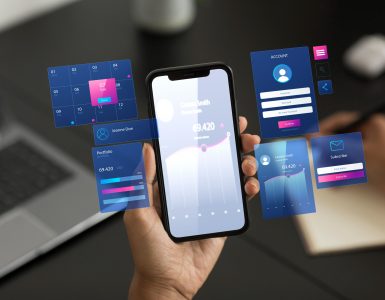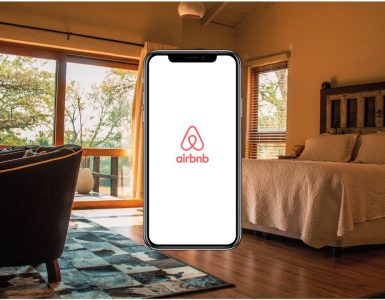Welcome to the dawn of a new digital epoch – the Metaverse. This burgeoning realm, where the physical and virtual worlds converge, is not just a buzzword; it’s a frontier of infinite possibilities that is reshaping our perception of reality. The Metaverse, a collective virtual shared space, created by the convergence of virtually enhanced physical reality, augmented reality (AR), and the internet, is poised to revolutionise how we interact, work, and play.
In this digital utopia, mobile apps are the chariots that transport us to these immersive virtual realities. They are the key tools enabling us to explore, create, and experience the boundless wonders of the Metaverse. As we stand at the brink of this technological revolution, the importance of mobile apps in navigating and shaping these virtual landscapes cannot be overstated. They are not merely applications; they are gateways to new worlds, offering experiences that were once the realm of science fiction.
This article aims to be a beacon for developers, startups, and businesses who are eager to embark on this transformative journey. It’s an exploration of the opportunities that lie in the Metaverse, an examination of the challenges, and a guide to harnessing the magic of next-gen mobile apps for creating truly immersive virtual realities. Whether you’re a seasoned developer, a budding entrepreneur, or a forward-thinking business, these insights will help you understand the Metaverse landscape and how you can contribute to and thrive in it.
1. Contextualizing the Metaverse
The Metaverse, once a figment of science fiction imagination, has rapidly evolved into a pivotal aspect of mobile app development. It represents an expansive virtual shared space, emerging from the blend of enhanced physical reality, augmented reality (AR), and the vast expanse of the internet. This digital realm heralds a new era, offering unparalleled opportunities to craft immersive experiences that push beyond the conventional limits of app functionality. As developers and businesses venture into this virtual space, they are not just stepping into a new market; they are entering a world of limitless potential that redefines interaction, collaboration, and creativity.
2. Potential of VR in Mobile Apps
In the forefront of this technological revolution stand mobile applications imbued with Virtual Reality (VR) capabilities. These applications are more than just platforms for games or simulations; they are gateways to expansive, intricate virtual worlds where the limits of reality are continuously stretched and reimagined. The scope for VR in mobile apps is enormous and diverse, encompassing everything from immersive virtual tours and educational experiences to new realms of social networking and entertainment. These applications are poised to transform how we perceive and interact with digital content, offering users not just a service or a product but an entirely new experience.
3. Challenges and Opportunities in Developing VR Mobile Apps
The journey to develop VR mobile apps, however, is replete with its unique set of challenges. Developers face issues related to hardware constraints, the intricacies of user interface design, and the imperative of delivering a seamless, immersive experience. These hurdles demand innovative solutions, technical expertise, and a deep understanding of user expectations in virtual environments. Yet, the potential rewards are immense. Overcoming these challenges opens doors to remarkable innovation, substantial market growth, and the chance to craft transformative experiences for users. In this rapidly evolving domain, every challenge conquered is a step towards redefining the fabric of virtual interaction and entertainment, setting new standards for what mobile apps can achieve in the Metaverse.
The Metaverse Landscape
1. Diverse Interpretations of the Metaverse
The Metaverse is a concept that defies a singular definition, encompassing a broad spectrum of digital environments. At one end of this spectrum are interconnected virtual worlds, offering users the chance to explore and interact within a boundless network of digital realms. On the other end, there are enhanced VR experiences that seamlessly integrate digital and physical realities, blurring the lines between the virtual and the real. Each environment within this spectrum offers a distinct approach to experiencing and interacting with digital content. From immersive gaming landscapes to virtual marketplaces and social platforms, the Metaverse is redefining the possibilities of digital engagement and connectivity.
2. Mobile Devices: The Access Points to the Metaverse
In the dynamic world of the Metaverse, mobile devices serve as essential access points. They function as convenient and portable gateways, enabling users to seamlessly enter and navigate these virtual spaces. The widespread availability and advanced capabilities of smartphones and tablets make them ideal platforms for the widespread adoption and integration of Metaverse applications. This accessibility not only democratizes entry into the Metaverse but also ensures that these immersive experiences are readily available at our fingertips, anytime and anywhere. As mobile technology continues to evolve, these devices are set to become even more integral to our virtual explorations, acting as the bridge between our physical world and the limitless possibilities of the Metaverse.
3. Industry Trends and Developments Shaping the Metaverse
The evolution and growth trajectory of VR and the Metaverse are significantly influenced by continuous technological advancements. Key developments in this domain include the creation of more sophisticated and user-friendly VR headsets, the acceleration of internet connectivity, and the enhancement of smartphone processing power. These technological strides are paving the way for richer, more immersive experiences within the Metaverse. Moreover, industry trends indicate a surge in interest towards immersive virtual experiences, both from consumers and businesses.
Crafting Immersive VR Mobile Apps
1. Sensor-Based Interactivity in VR Mobile Apps
Modern smartphones are equipped with advanced sensors like gyroscopes and accelerometers, essential for creating immersive VR environments. These sensors enable the detection of head and hand movements, seamlessly translating them into virtual actions for a more interactive VR experience. Notable applications like VR Roller Coaster and Google Cardboard have effectively utilized these sensors, offering users engaging VR experiences. The primary challenge in this domain is ensuring that physical movements are accurately and comfortably translated into the virtual realm, without causing user disorientation or discomfort.
2. Augmented Reality Overlays in the Metaverse
Augmented Reality (AR) enhances the Metaverse by overlaying digital information onto the physical world. This integration allows users to interact with virtual elements superimposed onto their real-world surroundings. AR has found diverse applications, from Pokémon Go in gaming to IKEA Place in retail, and is particularly transformative in education by providing interactive learning experiences. The challenge lies in crafting seamless AR experiences, which requires meticulous UI/UX design and robust technical architecture for accurate real-time overlays
3. Haptic Feedback and Spatial Audio in VR Apps
Haptic feedback and spatial audio significantly enhance VR experiences by adding layers of realism. Haptic feedback simulates tactile sensations, while spatial audio delivers immersive 3D soundscapes. Applications like Beat Saber have effectively incorporated these technologies to elevate user immersion. The integration of these technologies into mobile platforms poses challenges due to device limitations and the need for sophisticated software algorithms.
4. Social Interaction and Collaboration in Virtual Spaces
Mobile VR apps are increasingly becoming platforms for social interaction and collaboration, offering unique ways for users to connect, work, and play in shared virtual spaces. For instance, Spatial enables collaborative virtual workspaces for remote work, while Engage offers immersive educational experiences. The design challenge is to create a sense of presence and facilitate intuitive interactions that are natural and engaging.
5. Performance Optimization in Mobile VR
Performance optimization is crucial for the smooth running of VR apps on mobile devices. This involves optimizing graphics, ensuring efficient processing, and managing battery consumption. Techniques include reducing graphical load and optimizing code for better performance, while balancing visual fidelity with device capabilities. Apps like Oculus Quest demonstrate how performance optimization can result in a superior VR experience on mobile devices.
6. Case Studies and Local Initiatives
Innovative VR mobile apps have set industry benchmarks, such as Google’s Tilt Brush, which allows users to paint in 3D space. Local initiatives, like those in Lucknow Division, Uttar Pradesh, India, are exploring VR in education by creating interactive learning apps. These examples underscore the significance of creative vision, user-centric design, and technological proficiency in developing successful VR applications.
Conclusion
The exploration of VR in mobile apps showcases a field brimming with opportunities and challenges. The key to success lies in leveraging technology to create immersive, engaging, and valuable user experiences. The future of VR mobile apps in the Metaverse is bright, with ongoing technological advancements and increasing user interest paving the way for more sophisticated and interactive experiences. The impact of these technologies is vast, extending beyond entertainment to fields like education, healthcare, and business, and is set to fundamentally alter our interaction with digital content.






Add comment